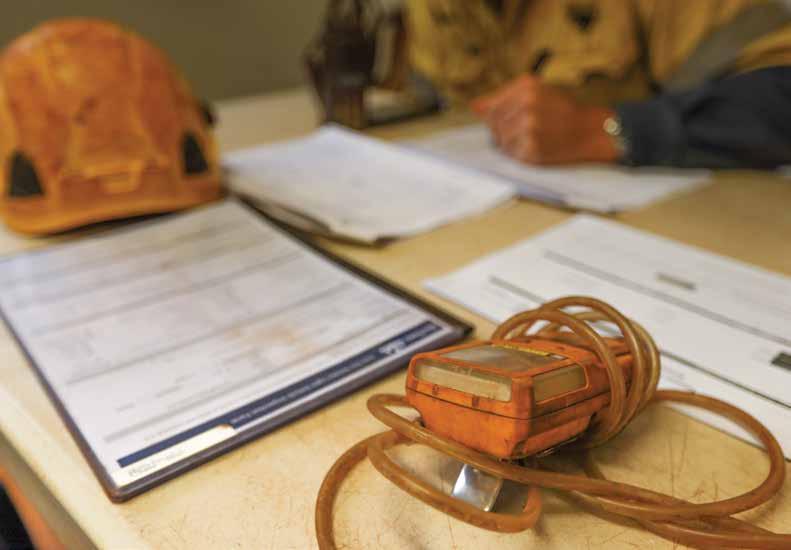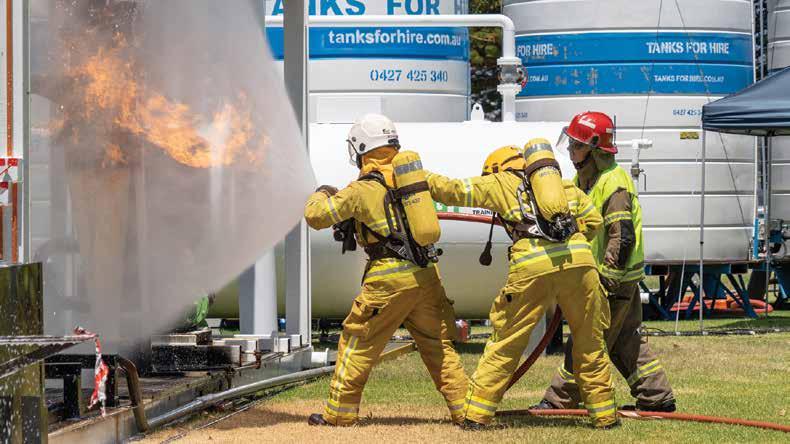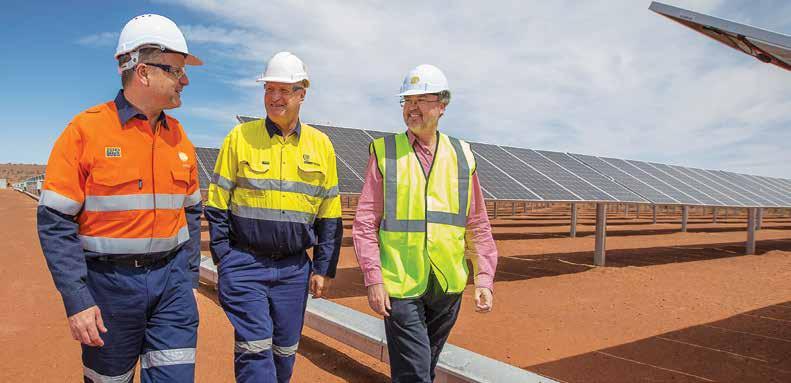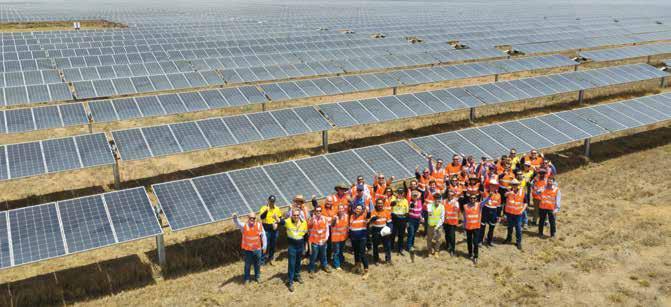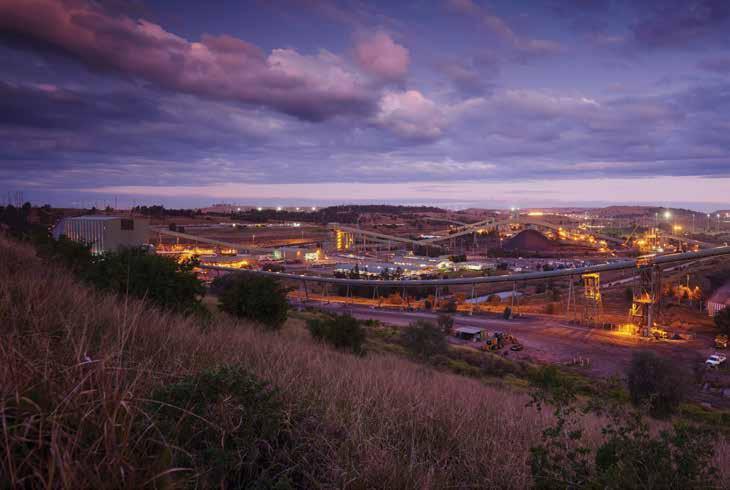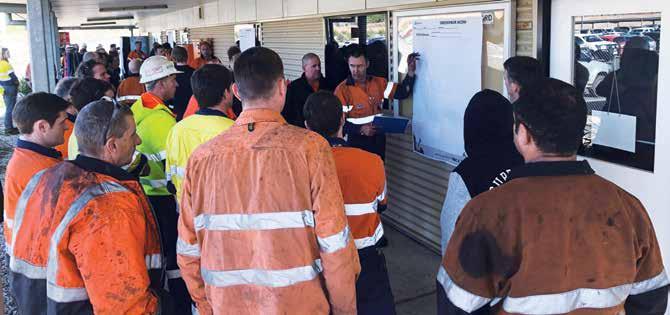
6 minute read
The gender debate
Kelly Carter, Stuart Jenner, Felicia Binks, Guilia Savio, Shae Russell and Rebecca Johnston at the Women in Gold Great Debate. Image: GIG.
Diversity debate expands on need for multi-dimensional approach
Gold Industry Group (GIG) has tackled the topic, ‘a diversity debate that begins and ends with gender is doomed to fail’ in 2019, with teams in Perth and for the first time Melbourne and Sydney facing off with opinions on the topic.
Safe to Work has watched on in Melbourne as four speakers, with vastly different examples of how this topic is a part of their careers and personal lives, debate for and against the statement.
For the proposition, Gold Road Resources general manager for capability and culture Stuart Jenner teams up with Kirkland Lake Gold environment and community manager Felicia Binks.
The opposing team features Newcrest Mining principal for diversity and inclusion Giulia Savio and Agora Financial Australia chief editor Shae Russell.
Jenner starts the discussion, posing “diversity is more than one or two dimensional,” speaking about the overcomplication of gender quotas potentially preventing opportunities for other minority groups.
He then pulls at the crowd’s heartstrings, sharing his concerns for his daughter, who is living with a rare medical condition.
Jenner says he fears she may struggle to enter the workforce someday, due to the still prominent gaps in diversity for issues apart from gender, such as disability but also race, religion, FEMALE REPRESENTATION AND DIVERSITY IN MINING REMAIN HOT TOPICS WORTH DEBATING, WHICH IS EXACTLY WHAT THE GOLD INDUSTRY GROUP DID AT ITS ANNUAL WOMEN IN GOLD GREAT DEBATE. SALOMAE HASELGROVE WRITES.
sexual orientation and more.
“As a society, we need to do more. As a mining industry, we can do a lot more,” he says.
“There are barriers we need to overcome but let’s not make them higher than they actually are and let’s definitely not create barriers that do not need to be there.
“We started with gender, I agree we needed to start somewhere and continue efforts in that space, but we are missing most of the pie, we need more effort and focus in other areas,” Jenner says. “We need to put more than just gender on the agenda.”
Savio counters this by saying the industry must get gender equality right first and by doing so, this will positively affect the other minority groups.
“Of the other minority groups; LBGTIQI+, those with disabilities, neurodiversity as well as cultural and ethnicity groups, what do you think one of every two of those are?” Savio asks the crowd.
“Female. If just over 50 per cent of the population are women; why not start there, and how wonderful if we tick some other boxes to improve the situation of other minorities on the way?”
Savio also points out benefits such as maternity and paternity leave, which would not have come into the workplace without the fight for gender diversity and the need to continue doing the right thing on the fight for gender equity.
“Workplace flexibility is no longer just for the mums or the girls, it’s for everyone, but it did start for the mums and the girls, after a very, very long time of it not being there, but now it is accessible for all,” Savio says.
“Would you ever be tired of talking about safety? Would you ever be tired of talking about sustainability? I’m here to tell you, I am not tired of talking about what is right.”
Binks then urges the crowd to consider the overuse of the term gender diversity, how it has led to people not being as eager to engage in diversity programs and how the industry must disrupt the backlash before it takes over the conversation.
“The overuse of the term gender diversity has led to resistance to engagement and we have a responsibility to disrupt backlash before diversity loses its essence,” Binks says.
“When your rhetoric outplaces action, people become tired and seeing constant messaging without seeing long-term results also causes fatigue.”
Binks backs up her argument with statistics from as recent as 2018 that show while 50 per cent of the female population in Australia are employed, the mining figure is only 16.7 per cent.
“Of this 16.7 per cent, only 18 per cent of women hold senior management positions and only 15 per cent hold executive positions,” Binks explains.
“Although we have made some progress, but this progress is really, really slow, when you focus on only gender diversity and there’s slow progress, people get fatigued. “xxx” Shae Russell closes the opposition’s argument at the Women in Gold Great Debate. Image: GIG. Guilia Savio builds her case for the opposition in the Women in Gold Great Debate. Image: GIG.



“Let’s become more sophisticated with our approach and include more than just males and females,” she says.
“Let’s invite people from all levels of organisations to make it a place people of all genders, races and ages want to come to work.
“Then and only then will we achieve real diversity and inclusion and get those real and tangible results we currently don’t see.”
Russell concludes her side’s argument, saying if it is still necessary to have a conversation about whether gender diversity has come far enough, then the answer is no.
“Here we are on this stage, 45 days out of a new decade discussing gender diversity and if it’s come far enough?” Russell ponders.
“How has an industry come far enough when it hasn’t even got to 20 per cent female employment? That is not progress and that’s why we need to continue the gender conversation.”

Felicia Binks gives her argument for the proposition side at the Women in Gold Great Debate in Melbourne. Image: GIG. Stuart Jenner opens the Women in Gold Great Debate for the proposition in Melbourne. Image: GIG

Answering Jenner’s comments on disability, Russell shares her own experience as a single mother of a child with autism and how she works her diverse background to her advantage to become a more efficient worker.
“I’m a single mum, I have two children, one with autism,” Russell explains.
“That technically puts me in the ‘too hard’ basket to hire, yet I outwork most of my co-workers, mostly men, I’ve also worked out how to do my job more efficiently because of my diverse background.”
Russell then reinforces that the momentum of the fight for gender equality needs to be expanded onto larger topics.
“Let’s use that power and that momentum to look at other races, religious minorities, neurological differences, sexual identities, socioeconomic differences,” Russell says.
“We need to take gender and expand it to dismantle power structures that reinforce group thinking and break down entrenched power, to make more inclusive and diverse environments,” Russell says.
As close as the debate it, the crowd of about 100 people cheer Savio and Russell to victory, deciding no, a diversity debate beginning and ending with gender is not doomed to fail.
MINING FOR LEADS?

1ST - 3RD APRIL 2020 MELBOURNE CONVENTION & EXHIBITION CENTRE
SUPPORTING SPONSORS CONFERENCE SPONSORS
ACCREDITATION PARTNER ASSOCIATION PARTNERS

